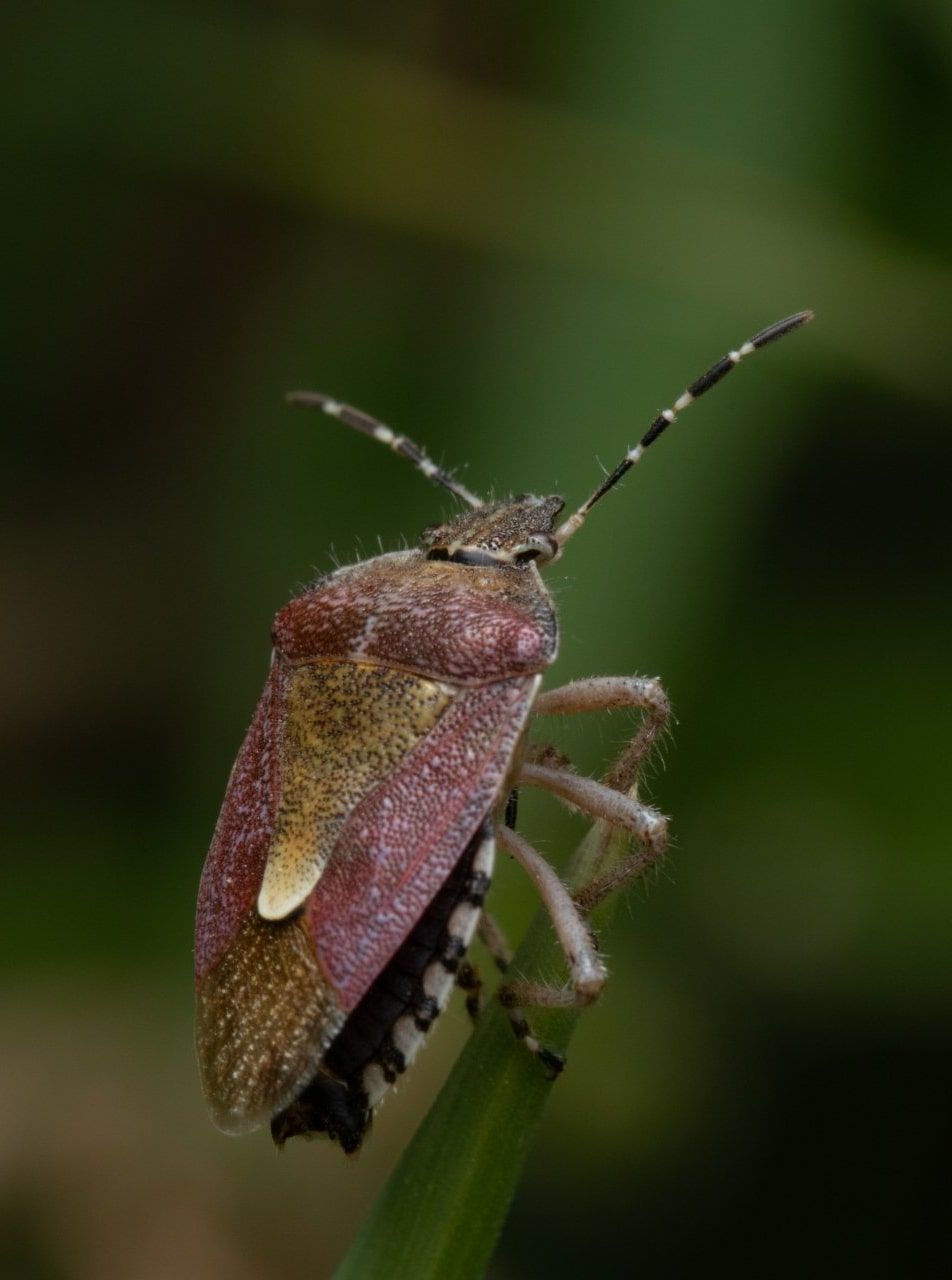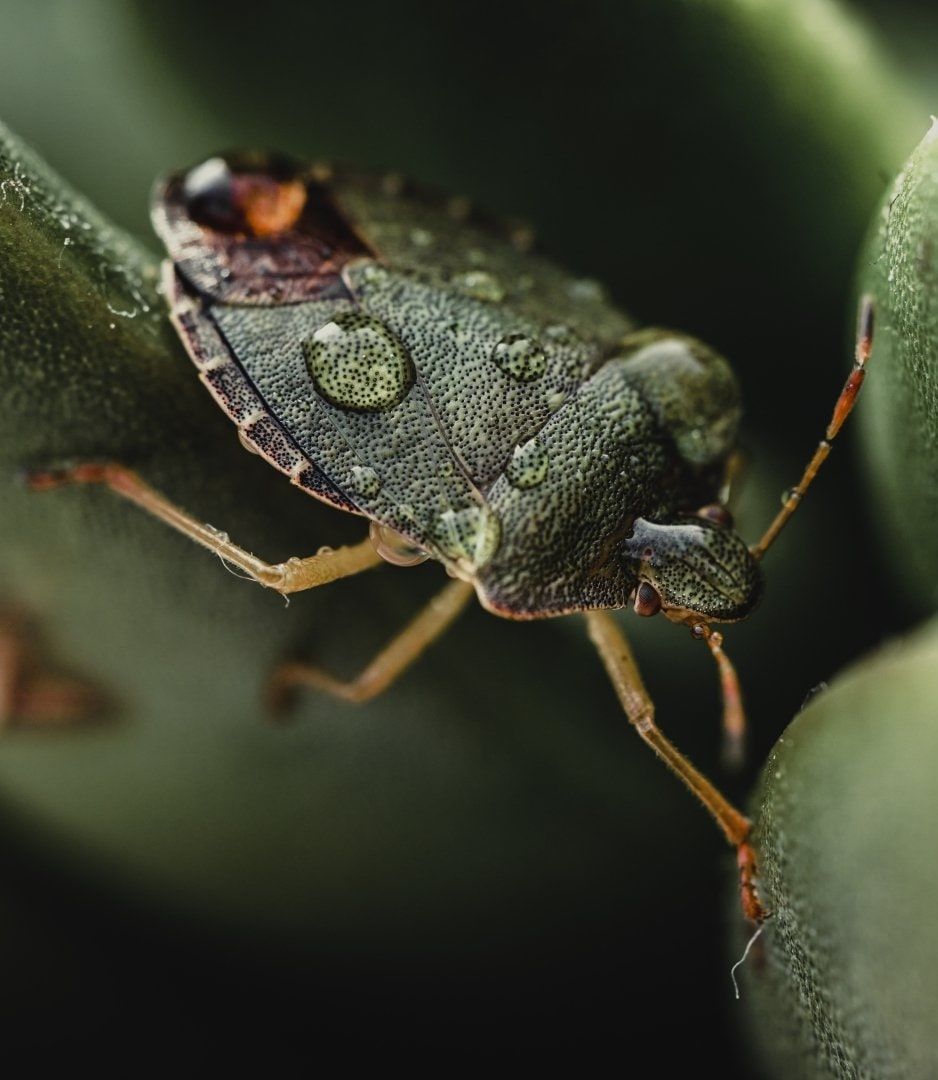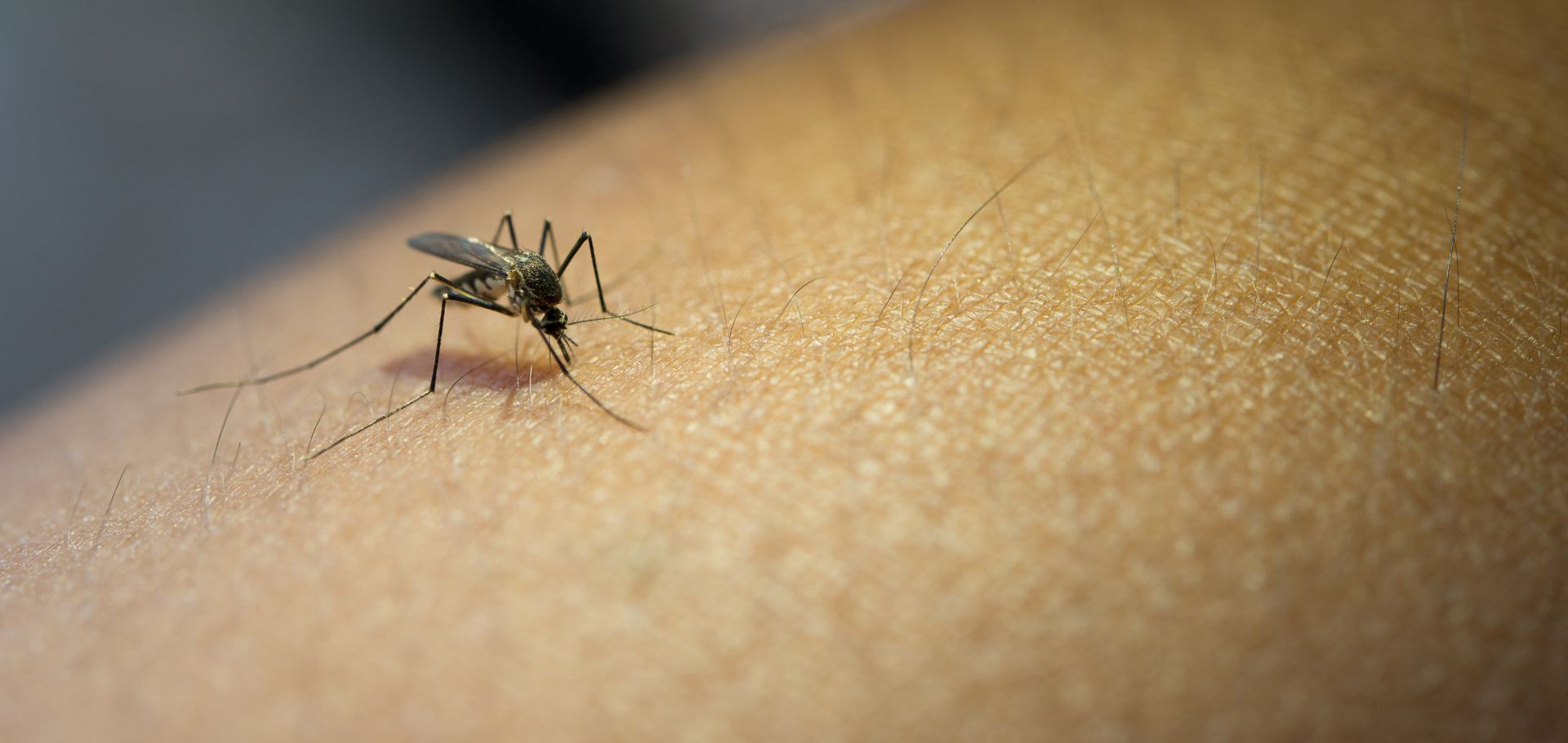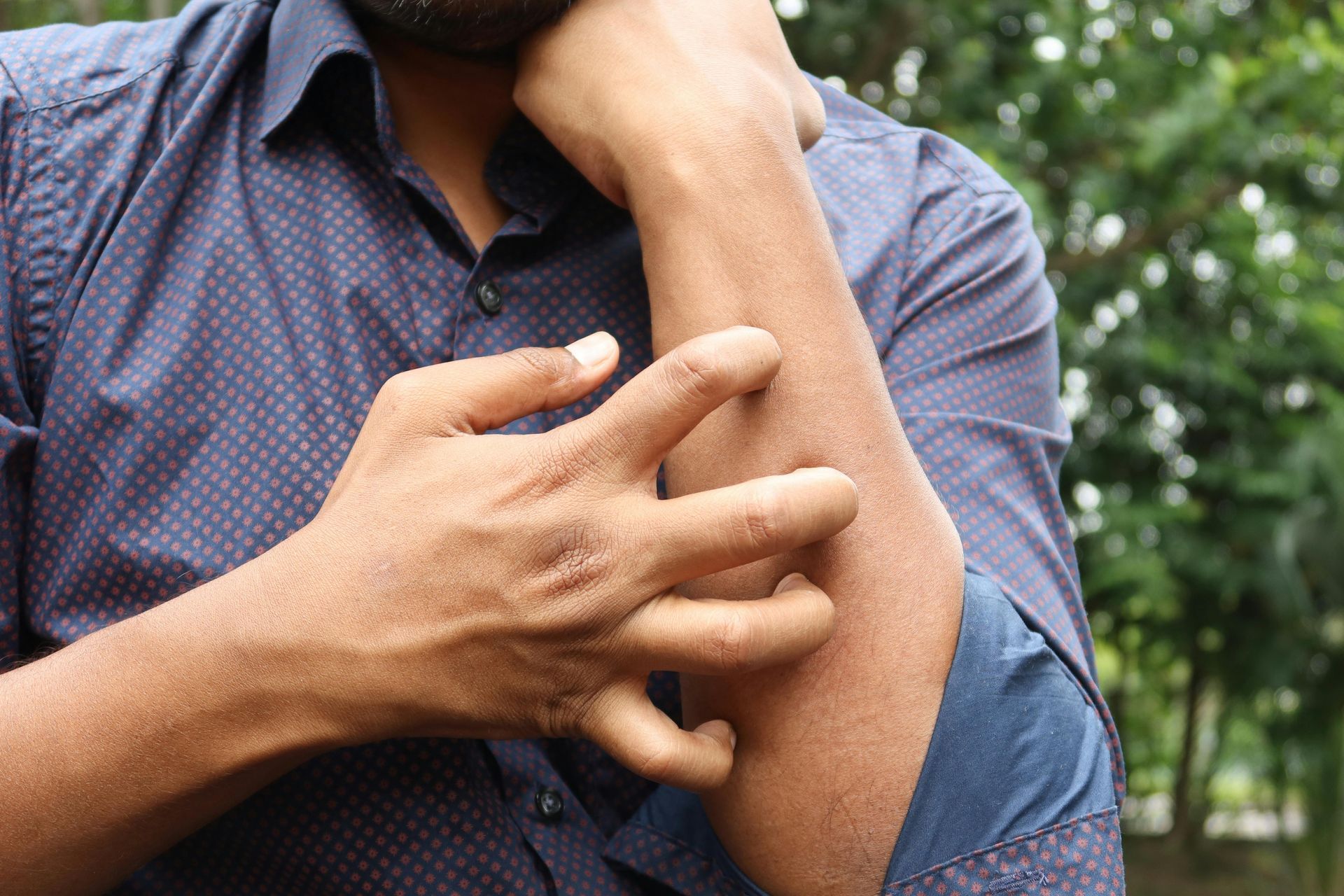Tips On Getting Rid Of Stink Bugs
Stink Bugs: What Are They & What Do They Look Like?
Stink bugs are little, shield-shaped insects that can reach up to 2 cm in length. Adult stink bugs are typically green or brown in color, but they are not well-known for their appearance. When threatened or smashed, these bugs produce a foul-smelling pheromone. The brown marmorated stink bug is the most frequent kind seen by householders. The brown marmorated stink bug or BMSB is regarded as an invasive species, or a pest of foreign origin because it was brought to the United States from Eastern Asia in the 1990s.
Both their width and length are almost equal. The mature bugs look much bigger because their legs protrude from their sides. The BMSB antennae have lighter bands, and the wings have darker rings. Stink bugs can fly well as adults, and when they land, they fold their wings over their bodies. A way to recognize adult stink bugs is by their fully formed wings. Nymphs, or immature stink bugs, emerge from their eggs as tiny insects. The BMSB's nymphs are colored yellow and red. The yellow turns to white as they mature. The nymphs go through five skin changes, and it becomes bigger each time.

In Which Areas of Our Homes Do Stink Bugs Hide?
Stink bugs may take over a house if they get indoors. In the late fall, before significant weather changes, stink bugs often look for hibernating shelters. When they initially enter a building, they can occasionally be spotted around windows or entrances. They will spend the winter hidden inside the walls, attics, or crawl spaces of a structure. Stink bugs are frequently seen indoors, especially in the living room. The first indication of an infestation is the discovery of large groups of stink bugs, either alive or dead. The heaps are often seen in sunny locations where the stink bugs have emerged to warm themselves, but it is possible that other stink bugs are concealing themselves within your home.
Stink bugs are also drawn to light and will enter your home. You should use shades to block off any light from inside the house and minimize the amount of outdoor illumination to avoid this. Stink bugs are rather prevalent, especially in the fall. Following basic advice and being aware of the things in your home that attract stink bugs will help keep them out. However, if you still see a lot of stink bugs in your house, you may get help from a qualified pest control specialist like Eyring Pest Control.

Why Stink Bug Removal Is Important
Stink bugs are invasive pests that can cause major crop damage. Originally from Asia, stink bugs are infamous for consuming crops including soybeans, peaches, almonds, and other fruits and vegetables. There are no native predators to control infestations because these pests were introduced into the country from outside. Because of this, crops have suffered damage costing thousands of dollars from stink bugs.
These pests may swiftly destroy small plants in addition to being a problem for agricultural producers. If you cultivate any type of product, you run the risk of losing your crop to stink bugs if you don't take prompt action. The presence of numerous stink bugs, either alive or dead, is indicative of an infestation. Stink bugs will appear on the warm sides of houses since that's where they warm up. By the harm an infestation does to a crop, growers frequently identify an infestation. Contact a certified pest control specialist to inspect and assess the extent of the issue and assist in locating the entry sites for this invasive species if there is an infestation within a structure or house.
How to Prevent and Get Rid of Stink Bugs
Stink bugs and other pests shouldn't be unpleasant houseguests in the fall. As the temperatures keep dropping and people start making preparations for the winter, think about pest-proofing your house from the inside and outside. Here are some quick actions homeowners may do right now to prevent the presence of this offensive insect:
- Block possible entry points - Caulking can be used to repair damaged seals around doorways, windows, and utility access points. Examine the seams formed by two distinct materials, such as those between brick and wood siding or concrete blocks. Fill up the cracks as necessary.
- Examine screens - Look for gaps and fill them as necessary. Verify that the screens firmly occupy the available area. Some homeowners claim that rubbing dryer sheets on screens will prevent pests from covering them.
- Lessen the moisture areas - Removing all moisture accumulation around your house will greatly aid in reducing the likelihood of numerous bug infestations. Look for blocked drains and leaky pipes.
- Check your goods - Before bringing them inside, check things like shopping bags and boxes holding stuff. Stink bugs can stick and travel on them and settle down within the house once they get there.
- Ventilate effectively - To remove contamination sites, adequately ventilate basements, attics, garages, and enclosed spaces. A dehumidifier could be useful in these spaces. Don’t forget to cover your attic vents and chimney with screens.
- Eradicating food sources - Removing the stink bugs' access to food is another method for disposing of them. Keep food in sealed containers and frequently dispose of trash in closed bags. To get rid of spilled crumbs and residue, be careful to sweep floors and wash off countertops.
- Vacuum them - Utilize a vacuum cleaner to get rid of them. Dead stink bugs produce a residue within the vacuum bag that can make your home smell bad, so dispose of it right once to stop the smell from spreading.
- Turn down lights - Because lights attract stink bugs, it's advised to use as little outdoor illumination as possible. To keep light from leaking inside during the nights, shut off outdoor lights and draw the curtains on the windows.
The Most Effective Method for Treating
Stink Bug Infestations is Professional Pest Control
Professional treatments are the most effective technique to solve the stink bug problem if you see a lot of them on your property. At Eyring Pest Control, our team of specialists will assist in determining the main issue and the points of entrance that stink bugs exploit. Plus, we have the appropriate pesticides to swiftly solve your stink bug problem. Dial
385-290-9782 right now!



